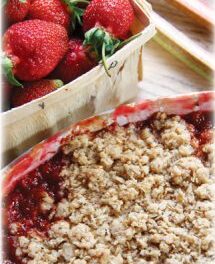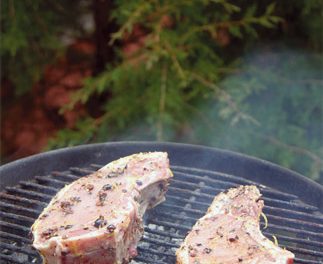By Pamela Denholm.
What a funny word. Biltong. It’s what we South Africans (Saffas) call our jerk-ish version of dried meat. The word is a Dutch hybrid of bil (buttock) and tong (strip) and I can tell you, we love our butt strips! It’s an integral, quintessential part of Saffa culture. We eat biltong at rugby matches, we take it on long trips for padkos, we put out it in little bowls for all to enjoy when we kuier, we eat it while we watch TV, and we even give a thick piece to teething babies to nosh on because it is simply the best thing to soothe sore gums. It is an excellent high protein snack if you are hiking through the bush or going to the beach to swim (but not if you’re swimming with sharks, because they like it too).
Although often likened to beef jerky when we try to explain the wonder of biltong, it is similar only in that meat is the main ingredient and both are dried. In process, taste, and texture they are vastly different, and any true Saffa will tell you there is just no contest. Biltong wins hands down in any eat-off, every single time. Sorry, America. Although, I must say, over the years biltong has become more readily available here, so at least a few of you agree with us. This is validated when we make a big batch around the holidays as gifts to neighbors and friends—we always get repeat orders and have even shared the recipe, so I’m confident we’ll make converts of you yet.

Assuming this to be the case, you may as well get ahead of the game, and luckily for you, you have a chommie on the inside (wink wink). I mean, we’re mates, right? So, what do you need to know? First, once this culture gains a foothold here, good biltong will be highly prized. Knowing where to get “the good stuff ‘“ will earn you rock star status in most social settings, because it’s kiff, man. And can I just say, bringing good biltong to a social gathering is one thing, but telling people where you got it elevates your standing even further and will secure your entry and acceptance to any social circle. Meeting your potential father-in-law for the first time? Don’t kid around, pony up your best biltong along with directions and he will happily hand over his first-born with his blessing. This may sound archaic, but don’t forget hopeful grooms still offer labola to the family of the bride where I’m from, and whilst I don’t expect labola will gain traction here in the US, I still say show up empty-handed at your own peril.
Second, family recipes are a source of great pride and are even protected intellectual property as in the wine making industry. Damn, biltong is good with wine. Recipes are tweaked as they are handed down from one generation to another in a coming-of- age-rite-of-passage, but that just adds to the salacious nature of it. So, if you find yourself gathered around the grill at a braai, and and the conversation turns to how to make the best biltong and you should tread lightly! Some of your mates might say the secret lies in the cut of meat, others might delve into the technicalities of humidity and drying time, while others still may talk about the blend of seasoning. It’s not unusual for friends to disagree and never find common ground on the subject. If you confront or challenge somebody’s idea or process, you are essentially challenging everything about them, their intelligence, their decency, their heritage, their South African-ness. I’m not saying wars have been fought, but for sure more than one oke’s been bliksem’ed.
Third, you can buy biltong, but because I like you, I’ll tell you how to make it so it’s lekker! All you need is a 5 lb roast, brown vinegar, Worcestershire sauce, salt, pepper, and coriander for ingredients. For equipment a shallow dish, a pestle and mortar, a fridge, some plastic paper clips, and a place to hang it while it dries. This process for drying meat has been unchanged for centuries, pre-dating refrigeration so you know it’s tried and true. The vinegar soak at the beginning of the biltong-making process is instrumental in retarding the growth of bacteria. Salt does the same thing and although I always thought coriander was added for flavor, turns out it too retards bacteria growth which would explain why these three ingredients are essential for authentic biltong. If your cut of meat is particularly tough, you can also add a teaspoon of bicarbonate of soda as a tenderizer. Once meat is properly cured, you can store it safely for weeks, even months, although it rarely if ever lasts that long in our house.
Fourth, if you are making your own biltong, make a doos (box). Biltong takes four days or more to dry, and when you add heat to the drying process you run the risk of making it tough. Drying biltong in the oven won’t work like it does for jerky. Instead, hang it in a clean dry place in front of a fan, but really, you’ll want a wooden drying box. We built our own using an old PC desktop fan, a light, some dowels, and a couple sheets of plywood.
We keep it in the attic. In the bottom we have a baking tray lined with parchment to catch any dropped spices or drips of vinegar. It’s easier than you think and while instructions for a drying box are easy to find online, there are a couple things to remember: when you hang the steaks to dry, you don’t want them to touch, so make sure the box is spacious. The steaks are also usually around eight to ten inches in length and hang off a two-inch hook, so the box should be at least eighteen inches high.
Finally, how to enjoy. Biltong can be torn from the whole strip using your teeth, sliced, or shredded. In recent years chefs have started to use it in all kinds of creative dishes. From pate and salads, to quiches, pizzas, and grilled sarmies—options are limitless. Biltong can also be diced and added to soups and stews with great success, so it can double as a preserved cache of meat if you are living with no electricity (which probably also accounts for its popularity back home where daily electricity load-shedding is still a reality, and many rural locations live without any electricity at all). Are you listening homesteaders? Off -the-gridders?
I hope you try it. Befriend a South African, or if you can’t, order it online. If you like it, try the recipe we’ve provided and share it with friends and neighbors. It’s very straightforward and next time we meet, eish! You’ll be a fundi!
How To
To make biltong, Pam buys a good-sized pot roast when a wintertime stretch of cold, dry air is approaching. Weather is key, because, as she says, high humidity can make drying meat very challenging.
Pam says: “Biltong will take anywhere from two to ten days to dry. You can test it by squeezing it with clean hands, the more give, the wetter it is and the more time it needs. We usually have great success at around day four or five.”
- 5 pounds boneless beef, in one piece
- •2 cups brown (malt) vinegar
- •1 cup Worcestershire sauce
- •½ cup whole coriander seed
- •2 tablespoons whole black peppercorns
- •3 tablespoons sea salt
Slice the roast with the grain into half-inch slices. Mix together the vinegar and Worcestershire sauce in a large, flat dish, and lay the meat on it, turning it for coverage.
With a mortar and pestle, grind the coriander and pepper. Mix in salt. Sprinkle half of the mixture on the meat, turning as before. Cover and chill for 8 hours.
Remove meat from the fridge, pat each piece dry and sprinkle with the additional spice mix. Hang by one end in a well-ventilated area to dry, anywhere from 2 to 10 days, depending on conditions.
Black and white sgraffito decorated serving piece by Michelle Green, found at Local Pottery, Norwell.








